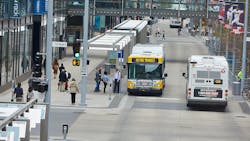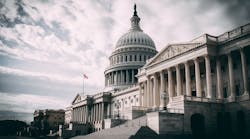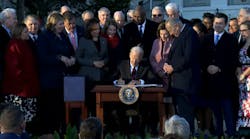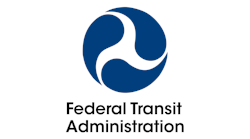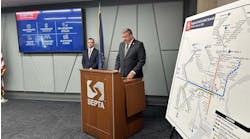FTA full year FY22 apportionment tables published detailing more than $20 billion transit investments
The Federal Transit Administration (FTA) published full-year funding apportionment tables for each of its 30 programs for Fiscal Year 2022. The more than $20 billion provides 58 percent more funding than FY21 and represents the largest transit allocation in American history.
“If you’re a young student who relies on transit to get to school, if you’re a mother who uses transit to bring your kids to the doctor, if you’re like millions of American workers who need reliable transit to get to and from work, this is an investment in you and making your life easier, safer, better and less expensive,” White House Infrastructure Coordinator Mitch Landrieu said during a press call ahead of the announcement.
With the passage of the FY22 appropriations bill in March, full year FY22 FTA apportionments could be determined and published. The full year FY22 apportionment tables are the first to reflect the authorized spending included in the Bipartisan Infrastructure Law.
The full-year amounts increased funding for many programs, including:
- $6.9 billion for the Urbanized Area Formula Program, which supports transit agencies in large U.S. cities and suburbs, 29 percent more than the FY21 funding level;
- $4.1 billion for the State of Good Repair Formula Program, 52 percent more than the FY21 funding level;
- $1.2 billion for the Low- and No-Emission Vehicle Program, more than six times the FY21 funding level;
- $893 million for Rural Area Formula grants, which support transit programs in rural areas, representing 23 percent more than the FY21 level;
- $422 million for the Enhanced Mobility of Seniors and Individuals with Disabilities program, representing 44 percent more than the FY21 level;
- $45 million to support to transit programs run by tribal governments through formula and competitive grants, representing 25 percent more than the FY21 funding level; and
- $49 million for State Safety Oversight, representing 69 percent more than FY21 funding level.
“This funding will open more doors to Americans than ever before,” said FTA Administrator Nuria Fernandez. “Every time a door opens on a bus, a streetcar, a train or a ferry, it’s another chance to connect with our communities. With this announcement, we are also helping fulfill key Biden-Harris Administration priorities by addressing equity, workforce and climate concerns and moving toward a clean, American-made transportation future.”
During the press call, U.S. Transportation Secretary Pete Buttigieg noted the department was working with transit agencies on projects they believe are important to their communities, but also noted the administration’s focus on project efficiency and delivery – particularly with large projects.
“We have to take every step we can to make sure every project is on time, on task and on budget,” said Sec. Buttigieg. “We need to make sure we identify all the pressures that tend to lead to inefficiency whether that can be administrative or political or logistical and ensure we’re staying a step ahead.”
The full year apportionment tables are available on FTA’s website, which is linked here.

Mischa Wanek-Libman | Group Editorial Director
Mischa Wanek-Libman is director of communications with Transdev North America. She has more than 20 years of experience working in the transportation industry covering construction projects, engineering challenges, transit and rail operations and best practices.
Wanek-Libman has held top editorial positions at freight rail and public transportation business-to-business publications including as editor-in-chief and editorial director of Mass Transit from 2018-2024. She has been recognized for editorial excellence through her individual work, as well as for collaborative content.
She is an active member of the American Public Transportation Association's Marketing and Communications Committee and served 14 years as a Board Observer on the National Railroad Construction and Maintenance Association (NRC) Board of Directors.
She is a graduate of Drake University in Des Moines, Iowa, where she earned a Bachelor of Arts degree in Journalism and Mass Communication.
